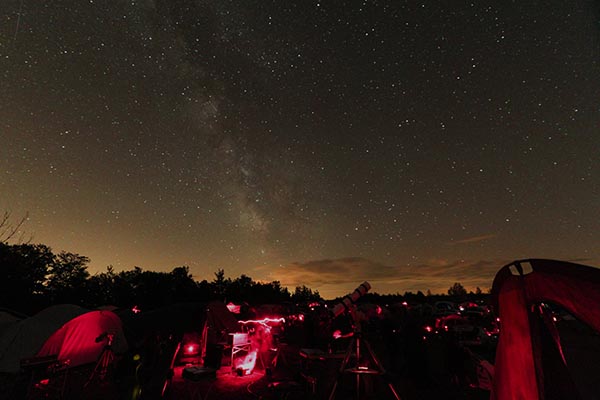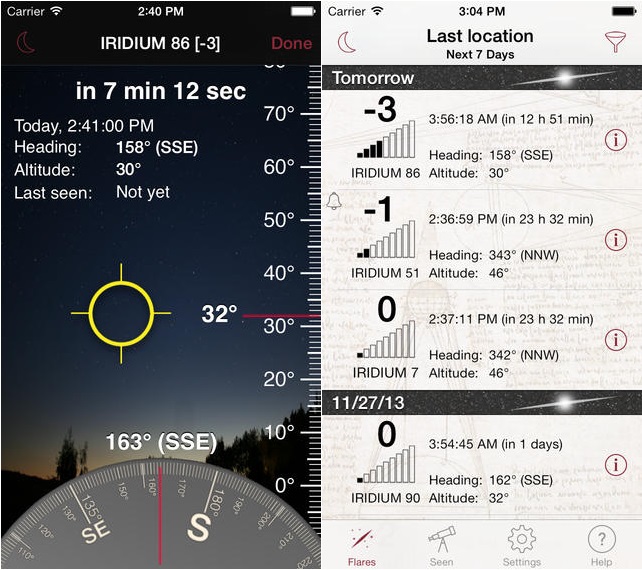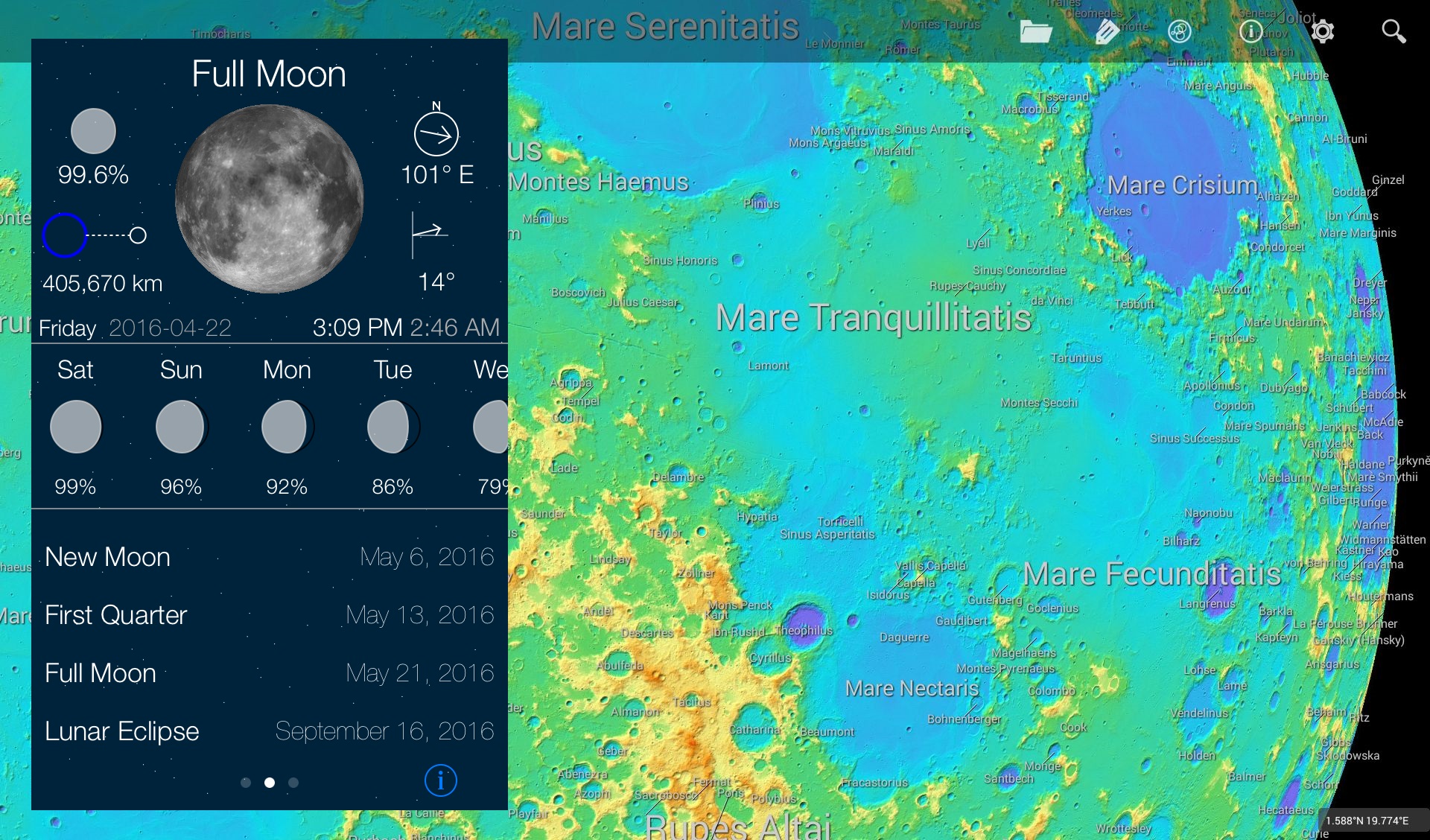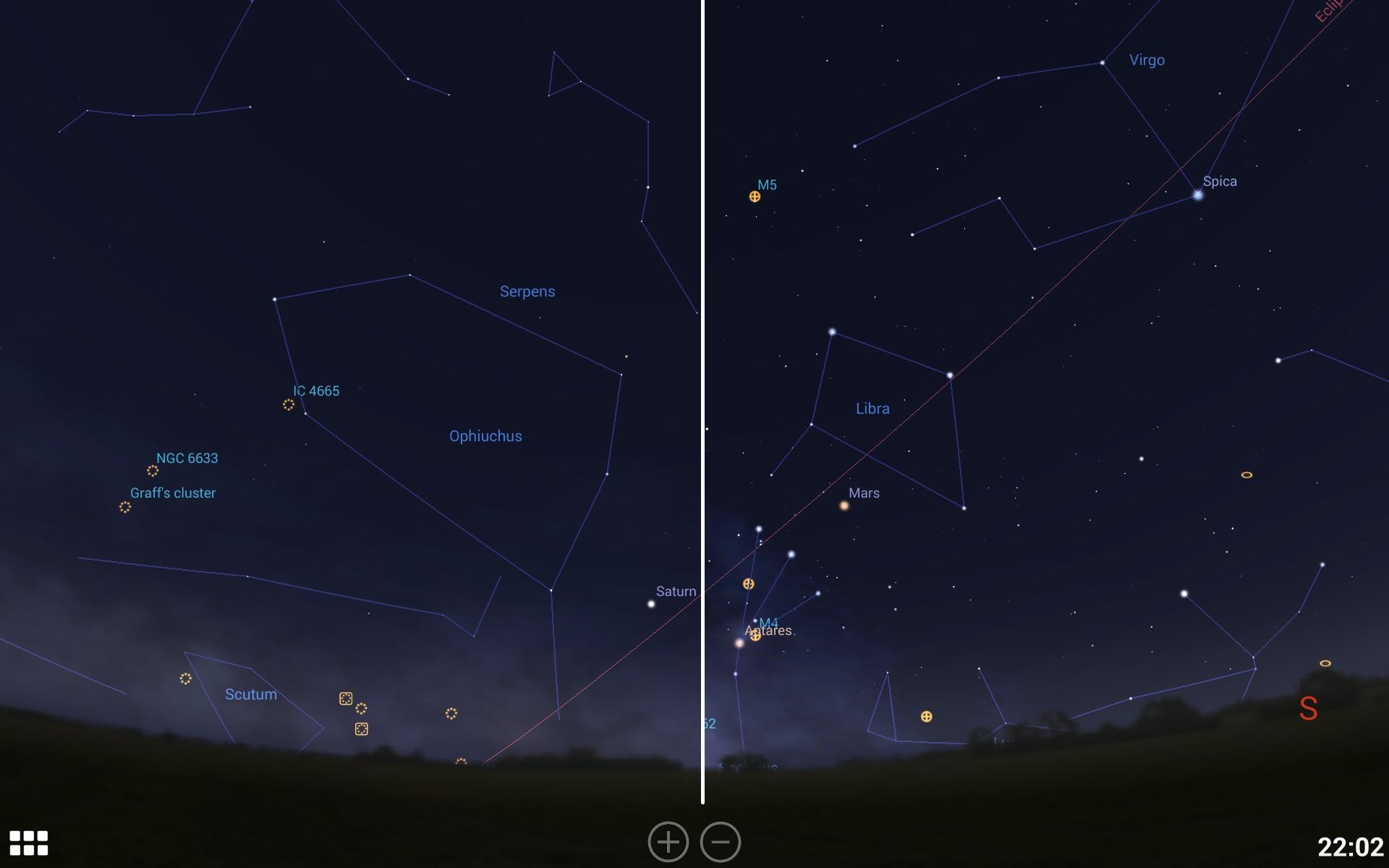Have an Awesome Summer Star Party Using Mobile Apps
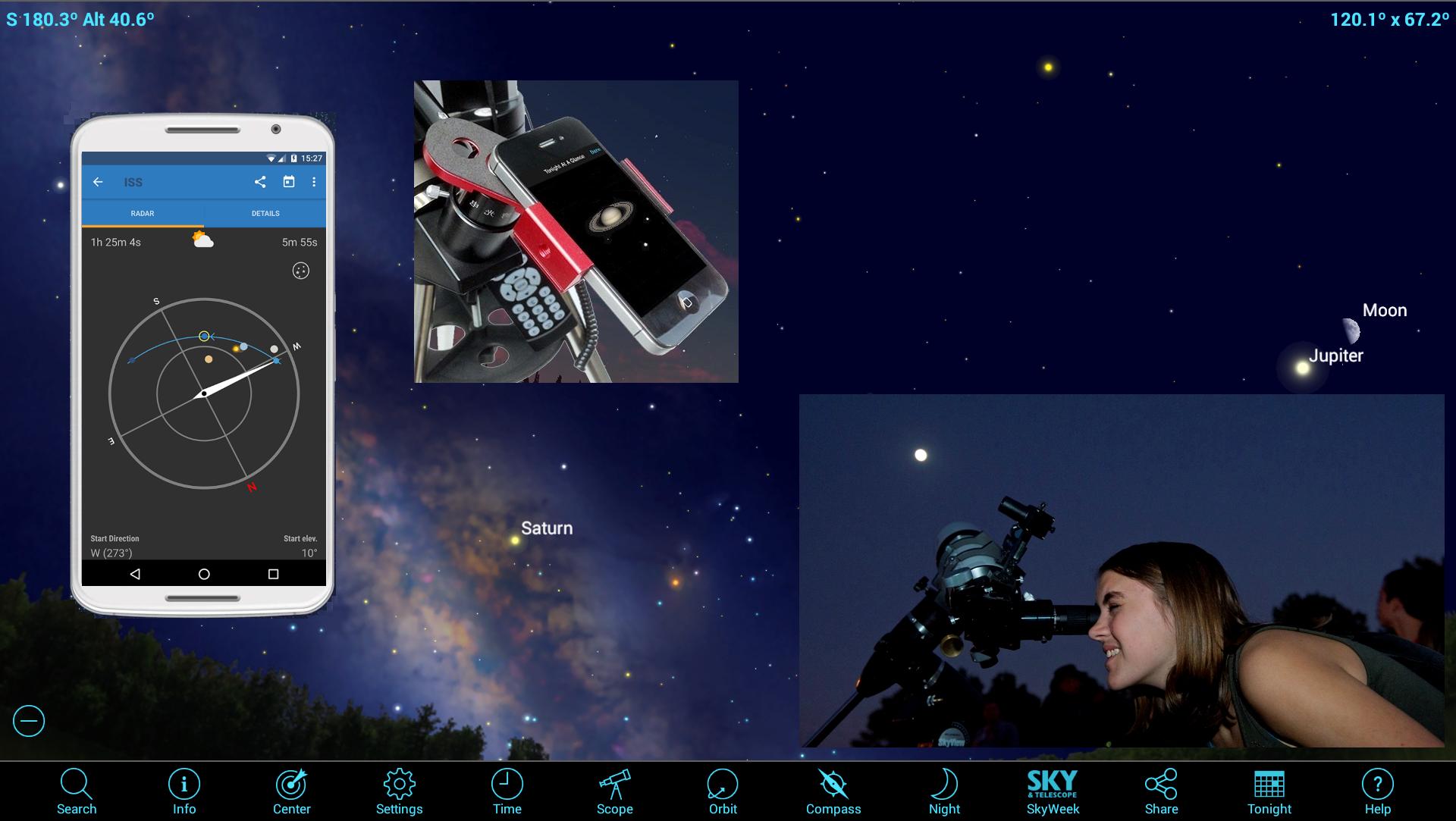
Star-party season is here! It's when lovers of the night sky gather for big regional events at dark-sky locations, and science centers and astronomy clubs host local stargazing nights. In this edition of Mobile Astronomy, we'll cover how your mobile device can improve your star-party experience, including which apps to download, how best to configure your devices and apps, and some star party etiquette.
Loading up the most useful apps
Three categories of astronomy apps are the most useful at star parties of any size: sky charting apps, satellite tracking apps and moon apps. Let's review what to look for and highlight some of the best choices.
Sky charting apps — such as SkySafari 5, Star Walk 2 and Stellarium Mobile — let you find out which objects will be visible in the night sky, and help you identify the objects you see while under the stars. After your turn at the telescope, you can use the object's name to search in your app for additional information (images, its distance, type, additional science, etc.). There are many free or inexpensive apps in this category. The ones listed above are known for their in-depth content, reliability, ease of use and terrific set of features.
For the second class of useful apps, I highly recommend having a good one for predicting and identifying satellites, especially the flyovers of the International Space Station (ISS). When out under a dark sky for a period of time, you will almost always notice artificial satellites moving through the constellations. All satellites shine by reflected sunlight. They orbit high enough above the Earth to be illuminated by the sun when it is well below the horizon for the observer, much as a mountain peak can be lit while the valleys below are in darkness. When a satellite passes more or less directly overhead (a point called the zenith) at your location, it will take longer to traverse the sky, and will reach a point near the zenith before descending toward the horizon. Satellites that are passing to the side of your location will not be as high or as bright. As satellites orbit Earth, they can suddenly appear or disappear as they pass in and out of the Earth's shadow. [Satellite Tracker and Interactive Map: How to Spot the International Space Station, Hubble & More]
Because it is large and in low Earth orbit, the ISS shines with a bright, steady light. Its 90-minute orbit can be seen two or more times in a single night, although only one such appearance will be high and bright. The space station's orbit migrates across the globe, so it is visible only during specific times, making a satellite tracking app especially helpful. (Other bright satellites include the two Chinese Tiangong space stations.)
Iridium flares are spectacular glints of sunlight reflecting off of the flat sides of the satellites that make up the Iridium pager and sat-phone network. The duration and brightness of each flare depend on the angle between the observer, the satellite and the sun — but a blaze brighter than Venus lasting from 5 to 10 seconds is typical. The satellites' orbits and orientations are so well known that algorithms can accurately predict when they occur for any place on Earth. By the way, Iridium has started replacing its satellites with smaller ones, so enjoy the flares while you can.
While SkySafari 5 and other apps include the brightest satellites and issue notifications when they are visible, specialized apps are particularly good at alerting you and showing you where in the sky to look. The best dedicated apps are those that use your device's compass and gyroscope in real time to guide you where to look, especially for Iridium flares.
Breaking space news, the latest updates on rocket launches, skywatching events and more!
The iFlares app for iOS displays a compass and elevation scale on-screen, as well as cursors that guide you to orient the device in the direction in which the flash will occur. Remember to get oriented ahead of time so you're not looking at the device instead of the sky during those critical seconds! The free GoISSWatch app (ISS only) and the paid GoSatWatch app for iOS feature pass predictions and the ability to display the satellite track on a globe or map, and against your night-sky star field in pan, pinch and zoom modes, as well as in dynamic compass mode. Time flow is available to preview the pass. RunaR's ISS Detector app for Android comes in a free version that includes tracking of the ISS and Iridium flares, as well as an option to purchase tracking for a suite of additional satellites, planets and comets.
Star parties for serious astronomers are held on moonless evenings to allow dim deep-sky objects to be seen under very dark-sky conditions. But most community observing events are held when the moon is near the first quarter phase, allowing it to be viewed in the early evening before it sets. For these parties, a good moon-related app is very useful. The excellent Phases of the Moon app, with a free and paid pro version (which is ad-free) for Android, is a full-featured app that presents the moon's phase on any date, a zoomable map of the lunar surface that includes Apollo landing sites and major feature names, a monthly moon phase calendar and the ability to tap to jump to the next full or new moon dates. To explore the surface of the moon in detail, in your binoculars or through a telescope, I recommend the free LunarMap Lite or paid LunarMap HD apps for Android. (Moon Map Pro for iOS is a similar app.) [2017 Full Moon Calendar]
Star-party etiquette
Star party astronomers love to show the public the wonders of the skies, either through their telescope or simply by pointing out the constellations and bright planets. The best ones share some facts and folklore to make the objects much more interesting and meaningful. Don't be shy about approaching a telescope at the star party, but do observe the following simple rules of etiquette.
Unless you've already been called over for a look, always ask before approaching someone's telescope. Occasionally, the astronomer is still assembling or finalizing the telescope's alignment, so give him or her some space until you're invited to look. Telescopes come in different configurations, so let the instruments' operators indicate where the eyepiece is, especially if it's dark.
Most telescopes have been carefully aligned with the sky to account for Earth's rotation and have been aimed precisely at a target. Make sure you don't accidentally kick the tripod legs. (Some setups have small, red blinking lights to show you where the tripping hazards are in the dark.) Avoid the temptation to grab the eyepiece with your hand and pull it toward your eye, because you'll likely spoil the targeting. (I see this happen all the time — it's human nature!) And definitely don't put your finger onto the eyepiece glass — it'll leave a smudge.
Ideally, the astronomer will have given you an idea of what you'll be looking at. Once you're at the eyepiece, take a nice long look all around the field of view. You'll be waiting for clear views, when the atmosphere settles down, and if you take just a fast glance, you might miss that. When you're looking at dim galaxies, nebulas and comets, try using averted vision — the astronomer will explain how to do that. Finally, remember to breathe; your eyes work much better when fully oxygenated.
Ask lots of questions, and be prepared to listen — but allow others to chime in, too. Remember: If you don't hear all the facts, at least find out the name or designation of the object so you can search for it on your astronomy app.
One of the most important tips for star parties is to avoid using any bright, white light. The human retina is equipped with two types of receptors: rods and cones. Rods are more sensitive to dim light, but they need time in darkness to reach maximum efficiency — at least 10 minutes and, optimally, half an hour. Exposure to white light starts the process over again, but long wavelengths of light, especially red light, does not. That's why you see astronomers using red lights for power indicators and reading their star charts with red headlamps.
To be a good star-party guest, make sure to avoid white flashlights and flash photography. If the kids are wearing sneakers with LEDs, consider putting a bit of masking tape over them. If possible, park your car with the headlights pointing away from the observing area. Turn the brightness of your device's screen to minimum; your dark-adapted eyes won't need bright lights anyway. [Astronomy Gear Guide: Tools, Tips and Tricks to Stargaze Like a Boss]
Nearly all astronomy apps incorporate an option to redden the display. It's usually called night mode. Be aware that if you exit the app, or if phone notifications pop up, you'll be spilling some white light. Better yet, use an app that turns your screen red, like Twilight for Android, or enable the Night Shift mode in iOS. Another great option is to purchase some clear-red-gel film, also known as rubylith (used for astronomy and stage lighting), and cut it to fit over your device's screen. The deeper the red filter is, the better. By the way, during full-moon star parties, people will not be as concerned about white light.
The astronomer may allow you to attempt to take a smartphone photo of the target through the telescope. This is usually easiest for the moon and bright planets. If others are waiting for their turn, try not to take too long. A great idea is to ask anyone who gets a nice picture to share it with everyone there or to post it to social media.
Smokers should be aware that smoke particles can adhere to telescope optics. If you are smoking under the stars, be sure to stand well away from any equipment that isn't your own!
Setting up your apps
Here are some additional tweaks to make your mobile device a valuable addition to the star-party experience. The sky overhead depends on your location, the date and the time. To ensure your device matches the stars, set up your app to pick up your location from GPS, or set your location manually. Within 60 miles (100 kilometers) of the nearest major town is fine for casual stargazing. Your device will have the correct date and time from your network, unless you're on vacation far from home. It's a good idea to check all of the above before leaving your house.
It's easier to navigate the sky if the number of stars displayed by your app is comparable to the number visible in the real sky. You can ensure this by adjusting the app's visual magnitude slider until you see about the same number of bright stars. Once you're comfortable finding your way around the sky — or scanning around with binoculars, which pick up fainter stars — dial up the number of stars displayed in the app.
I find it easier to identify the constellations if their lines are enabled in the app. Some apps allow the lines to be brightened and dimmed to your personal taste. And if your app supports deep-sky objects (nebulas, clusters and galaxies), make sure they are switched on. Ideally, the app will display them more or less as they appear to the naked eye. The SkySafari, Star Walk 2 and Stellarium Mobile apps, among others, can do this.
The ecliptic traces the plane of the solar system across the sky, and the moon and the planets will always be found on or near this line. If you are planning to hunt down the planets, it's a good idea to display the track of the ecliptic in your app.
If you wish to be alerted when major satellites will be visible, enable the notifications option. Note that satellites cross throughout the night, so you will probably want to use a quiet-hours option in the app if available, or turn off the alerts at bedtime.
Finally, try using the app with and without compass/VR mode enabled. If the device's gyroscope and compass are working well, positions in the sky should match up with your device. This is easy to check with an obvious target like the moon or Jupiter. If they're not lined up, switch off compass mode and navigate by swiping around the sky with your fingers. I prefer this method because I can lower my device and call up data on it without losing track of the object.
Going beyond
Here are some additional considerations to bear in mind when attending a star party. Bring a portable chair and binoculars. There are dozens of areas along the Milky Way to explore on your own, and your sky charting app will identify the best-known spots. Don't forget to dress for cold temperatures; even summer nights can get unexpectedly cold in many locations. Always have long sleeves and pants, and perhaps a hoodie, too. This also helps you avoid insect bites. Avoid spraying repellent or using burning coils while near telescopes. Snacks and drinks are a great idea. Alcohol has been shown to reduce visual acuity, so save that for the post-party party. And be sure to leave the observing site the way you found it. If the participants will allow it, shine some light around the area you've been using to look for any dropped equipment, or trash.
My friends and I like to listen to music while we observe. Our choice is usually classic rock, but you might prefer opera, classical music, or even science fiction film and TV-show soundtracks. Whichever you prefer, make sure that everyone is on board with music before you crank it up. Otherwise, pop in the earbuds for your mobile device, and enjoy your tunes privately while everyone else listens to the nocturnal sounds of nature under the stars.
In future columns, we'll talk about galaxy types, how to control your GoTo telescope with your phone, and how to tour southern skies not visible from the Northern Hemisphere. Until next time, keep looking up!
Editor's note: Chris Vaughan is an astronomy public outreach and education specialist at AstroGeo, a member of the Royal Astronomical Society of Canada, and an operator of the historic 74-inch (1.88-meter) David Dunlap Observatory telescope. You can reach him via email, and follow him on Twitter @astrogeoguy, as well as on Facebook and Tumblr.
This article was provided by Simulation Curriculum, the leader in space science curriculum solutions and the makers of the SkySafari app for Android and iOS. Follow SkySafari on Twitter @SkySafariAstro. Follow us @Spacedotcom, Facebook and Google+. Original article on Space.com.

Chris Vaughan, aka @astrogeoguy, is an award-winning astronomer and Earth scientist with Astrogeo.ca, based near Toronto, Canada. He is a member of the Royal Astronomical Society of Canada and hosts their Insider's Guide to the Galaxy webcasts on YouTube. An avid visual astronomer, Chris operates the historic 74˝ telescope at the David Dunlap Observatory. He frequently organizes local star parties and solar astronomy sessions, and regularly delivers presentations about astronomy and Earth and planetary science, to students and the public in his Digital Starlab portable planetarium. His weekly Astronomy Skylights blog at www.AstroGeo.ca is enjoyed by readers worldwide. He is a regular contributor to SkyNews magazine, writes the monthly Night Sky Calendar for Space.com in cooperation with Simulation Curriculum, the creators of Starry Night and SkySafari, and content for several popular astronomy apps. His book "110 Things to See with a Telescope", was released in 2021.

